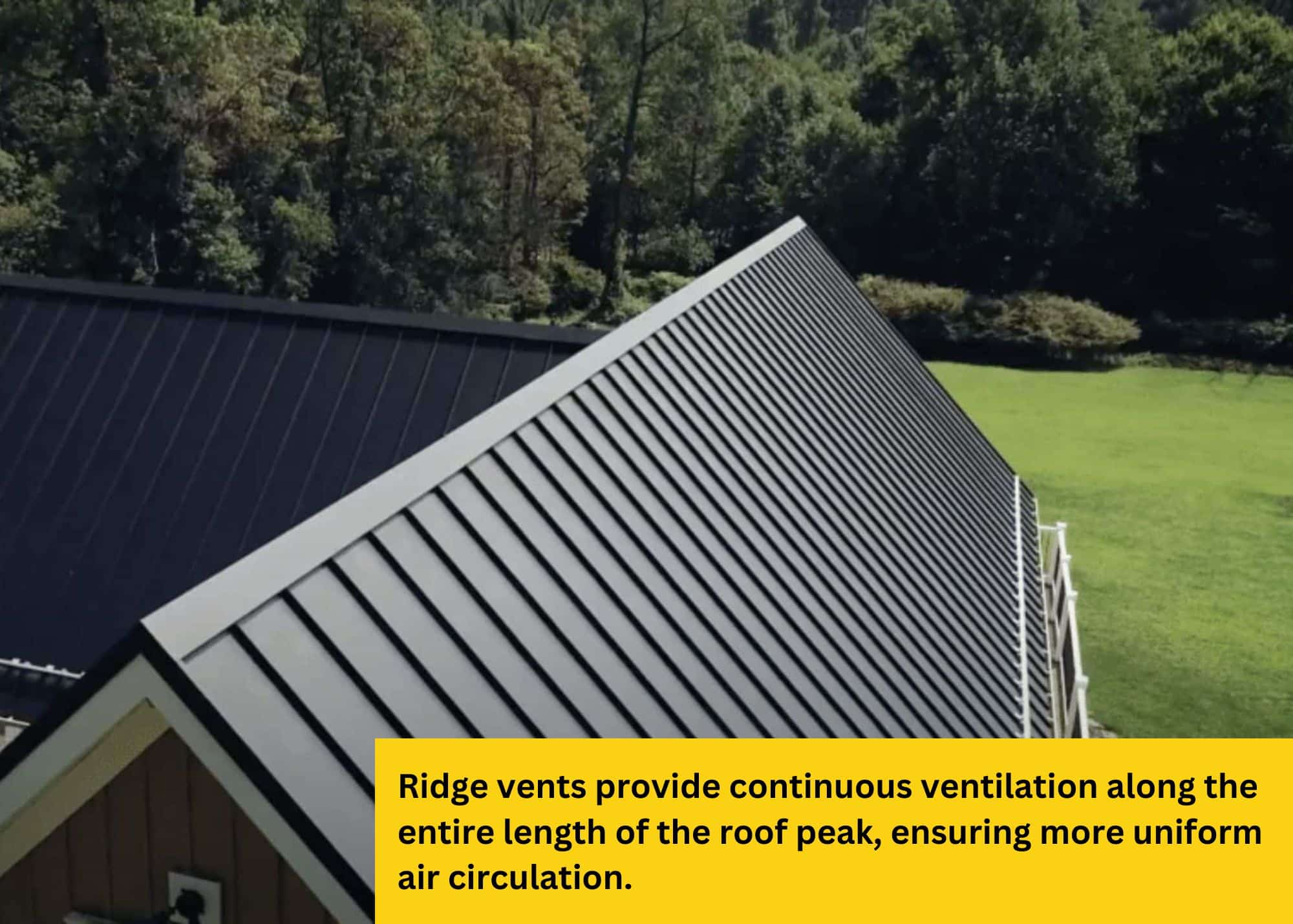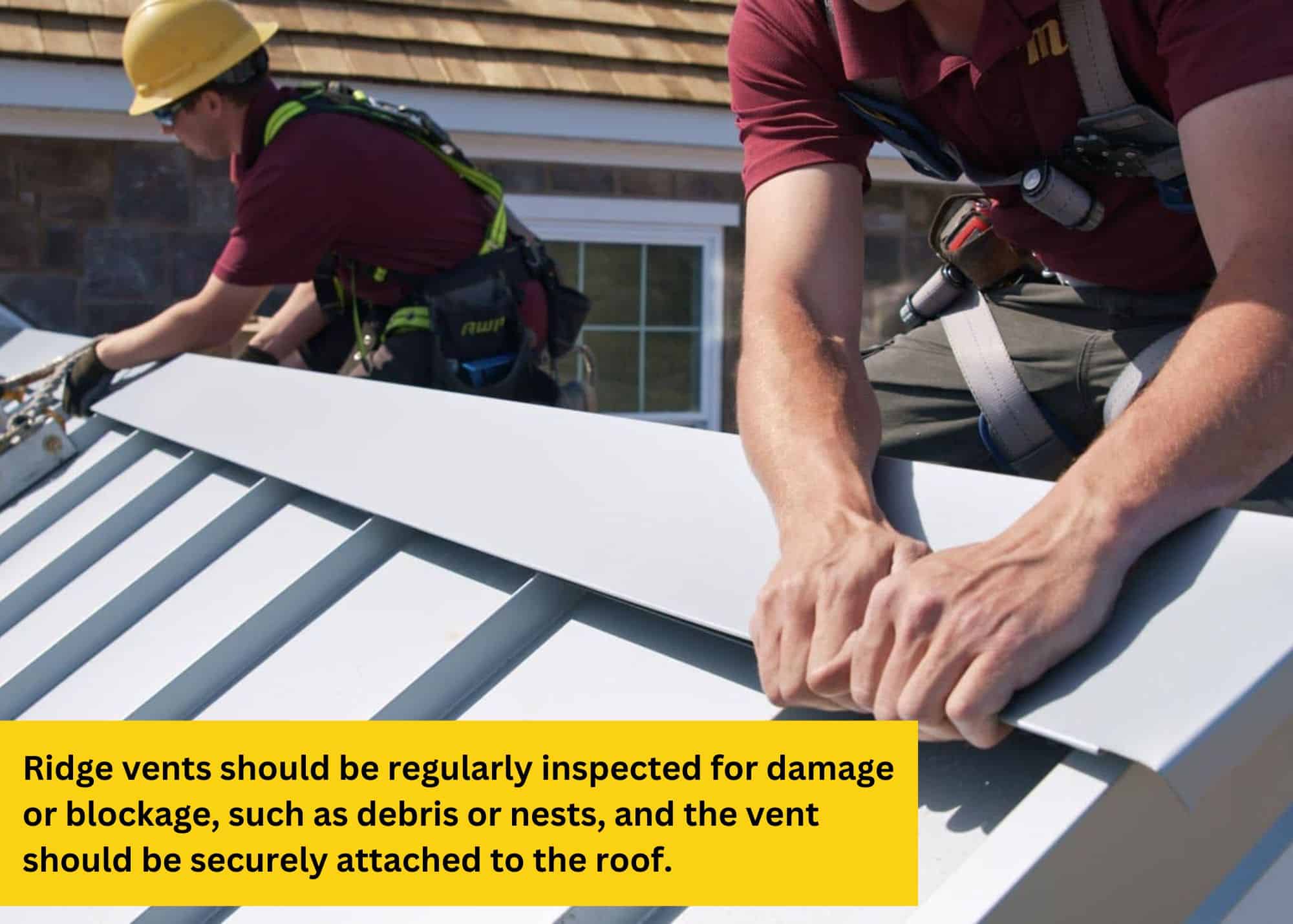Ridge Vents: Frequently Asked Questions and Answers
- What is a ridge vent?
- Why are ridge vents important?
- How do ridge vents work?
- Are ridge vents better than others?
- Can ridge vents be added?
- Do ridge vents leak?
- How to maintain a ridge vent?
- Will a ridge vent cool my attic?
- What are the downsides?
- Can ridge vents be painted?
- Can I install them myself?
- What materials are used?
- How can Snap-Z vents help?
Roof ventilation is probably something you don’t think about often. Still, it’s vital to the temperature, energy efficiency, and air quality of your home or workplace, and ridge vents are a handy tool in keeping that airflow moving. Because it’s virtually invisible to any casual observation of a building, you probably have questions about what a ridge vent is in the first place.
Since 2015, Snap-Z has been providing roof ventilation with its patented standing seam system. Faster and easier to install, with built-in wire meshing to keep critters out, the Snap-Z product line has been used and trusted by thousands of roofers and roofing distributors.

That’s why we’ve gathered our expertise and experience and created this FAQ to help answer some questions about ridge vents! You’ll learn about the benefits of roof ventilation and get some answers to air quality and energy efficiency mysteries you might not have thought of!
Ready? Let’s get started!
Table of Contents
1. What is a roof ridge vent?
A roof ridge vent is a type of ventilation system installed at the peak of a sloped roof. It allows warm, humid air to escape from the attic, promoting better air circulation and helping to regulate temperature and moisture levels.
In colder climates with a lot of snow, ridge vents also provide one unexpected benefit—turning cold, packed snow into additional insulation layers and keeping your heating system from working too hard!

While ridge vents are most commonly seen on top of shingles in residential homes, they are also used in industrial warehouses to release hot air and circulate comfortable air inside the building.
2. Why are ridge vents important for roofs?
Ridge vents are crucial for preventing heat and moisture buildup in the attic. Proper ventilation can extend the roof's life, reduce energy costs by improving HVAC efficiency, and prevent issues like mold and mildew.
Additionally, attic ventilation is crucial in conventional shingle roofs, as excessive heat can degrade the shingles and wooden structural components in the attic.
3. How do ridge vents work?
Ridge vents work on the principle of convection. As warm air rises, it escapes through the ridge vent, while cooler air is drawn in through soffit or eave vents, creating a continuous airflow that ventilates the attic space.
The ventilation also provides a secondary benefit by promoting air circulation in the building, allowing pollutants and microbes in stale air to be pushed out.
4. Are ridge vents better than other types of vents?
While there is no one-size-fits-all ventilation solution, ridge vents are often considered more effective than other types, such as gable or box vents. They provide continuous ventilation along the entire length of the roof peak, ensuring more uniform air circulation.

There are some situations where a ridge vent may not work due to the type of roof or lack of available roofline to place a vent, so a different kind of vent is necessary. To learn more about roof vents, look at our blog, “Everything You Need To Know About Roof Vents.”
5. Can ridge vents be installed on existing metal roofs?
Yes, ridge vents can be retrofitted to existing metal roofs. However, not all metal roofs or vents are alike, and it is recommended that a professional installation is done to ensure proper sealing and integration with the roofing system.
Having a professional install your ridge vent also provides several benefits, such as a warranty on the work, which would eliminate many headaches should any issues arise from the installation.
If you’re curious about installing ridge vents, check out our blog, "An Overview of Ridge Vent Installation on Metal Roofs."
6. Do ridge vents leak?
That’s a fair question, as any roof opening is where water could potentially get in–including your ridge vent.
Ridge vents are designed to be weatherproof, but severe weather, deterioration over time, or improper installation can cause your vent to leak.
When properly installed, ridge vents are leakproof and designed to keep out rain and snow while allowing air to escape. Proper installation and maintenance are key to preventing leaks.
How do you know if your ridge vent could be the cause of a leak? This blog might give you some insight, but a roof inspection is the only way to be sure.
7. How do I maintain a ridge vent?
Ridge vents require minimal maintenance. They should be regularly inspected for damage or blockage, such as debris or nests, and the vent should be securely attached to the roof.

To help you keep your vents in tip-top shape, here are 6 common ridge vent problems every informed homeowner should know about.
8. Will a ridge vent make my attic too cold in the winter?
No, ridge vents do not make attics too cold in the winter. In fact, they help maintain a consistent temperature by allowing excess moisture and warm air to escape, which can help prevent ice dams from forming.
Ice dams, icicles forming off the edges of your roof and gutters, are signs that your attic is experiencing rapid temperature fluctuations, causing ice and snow to melt and reform during a freeze-thaw cycle. These ice dam formations can cause damage to your attic, roof, and gutters if left unattended.
9. What is the downside of a ridge vent?
Ridge vents won’t work on all types of roofs. For example, complex hip roofs with limited ridge lines, pyramid-shaped roofs, and flat roofs could benefit from using box or offridge vents instead.
Ridge vents must also work with soffit vents to draw cool air into the attic. Soffit vents allow fresh air to enter the attic through the eaves of the roof, balancing the air pressure and allowing hot air to exit through the ridge vents above.
Ridge vents must be installed properly to function effectively. Incorrect installation can lead to leaks, reduced ventilation efficiency, and even pests getting into the attic!
10. Can ridge vents be painted to match the roof?
While ridge vents can be painted to match the roof color, it's important to use paint suitable for the vent material.
At Snap-Z, we manufacture ridge vents in many colors, but we highly recommend black, even if your roof isn’t black. We’ve found that ridge vents tend to be difficult to see due to their low profile. Even if they are seen, black ridge vents provide a complementary aesthetic, adding a crisp shadow line on the roof’s peak.
We’ve put a lot of thought into this—check out our thoughts on black ridge roof vents!
11. Can I install ridge vents myself?
While we love the enthusiasm and spirit of DIYers, professional installation is recommended to ensure proper functionality and avoid roof damage.
Another reason we recommend professional installation is that contracted work is covered warranties, so any issues with improper installation or defective materials are covered.

12. What materials are used for roof ridge vents?
Ridge vents are typically made from plastic, aluminum, or galvanized steel.
Snap-Z uses steel and aluminum in ridge vents to ensure that our products are durable, resistant to weather and pests, and provide a long-lasting solution for roof ventilation. Properly installed and maintained, a metal ridge vent can last as long as the roof, often 20-50 years or more.
13. How can the Snap-Z vent help roofing businesses?
Snap-Z’s metal ridge vents are made to help roofers by:
- Minimizing callbacks: With carefully designed critter protection and durable materials, your customer’s attic has long-term protection.
- Increasing crew efficiency: Snap-Z’s pre-cut lengths, pre-applied butyl tape, and pre-punched fasteners increase your crew's efficiency and profitability while keeping them on the roof for shorter periods, increasing safety, and reducing heat stroke.
- Protecting Hidden Fastener Ridges: Our vents work perfectly with hidden fastener panels, so you won't have to ruin a perfect standing seam roof!
Conclusion
We’re confident this FAQ answers your questions about ridge vents and roof ventilation! While we can talk about ridge vents until the snow melts off your roof (which would take a long time if your roof is ventilated correctly), the best way to find out more is to check out our blogs and talk to us.
At Snap-Z, we live and breathe ridge vents! We are confident that you can trust Snap-Z to facilitate a quality ridge vent installation experience and product every time.

Don’t let insufficient ventilation keep you from enjoying greater energy efficiency, better ventilation, and a safer roof! Our ridge calculator can get you started on better roof ventilation.
Contact us today!












